Many different workouts help individuals improve their fitness and muscle tone. The most common ones usually involve weight training sessions. However, new exercise routines are always being introduced into the world of fitness with the hope that they’ll be much more than just a fad.
A push-pull workout is an example of this, where one session concentrates on push exercises and the other on pulls. In general, a push workout involves activating muscles that push weights away from the body, while a pull exercise regime works by activating muscles that pull weights toward the body.
One reason this push-pull workout separation routine can be beneficial is that it allows time for muscle recovery because one set of muscles is activated one day and a different set the next.
How to structure a push-pull workout routine
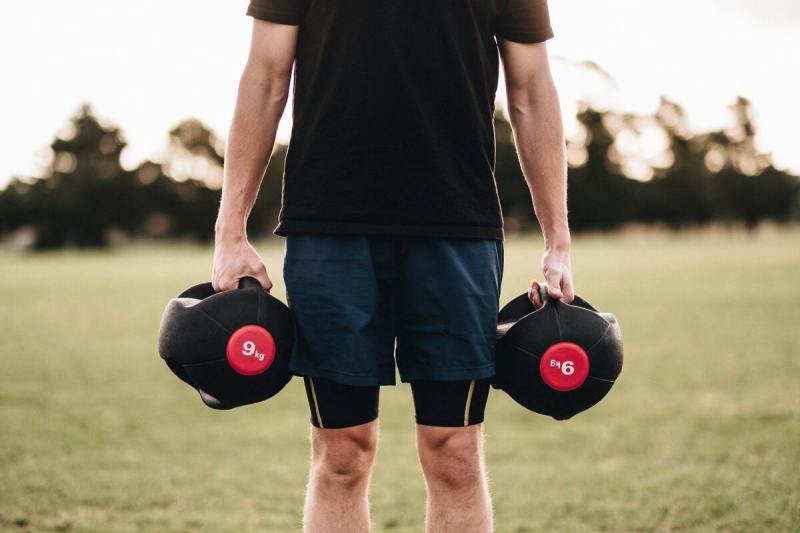
The general rule of a push vs. pull workout is to structure the routine so that muscles involved in pushing movements are worked out one day and those involved in pulling the next. This leaves time for muscles to recover.
Sessions can be as many as six days a week, with three focusing on the “push muscles” and three on the “pull muscles.” This leaves 24 hours of complete rest on the seventh day or between the six sessions.
For example, this would mean that Monday, Wednesday, and Friday would be push-day workouts where muscles in the chest, shoulders, and triceps are worked. Tuesday, Thursday, and Saturday would be for a pull-day workout with exercises that concentrate on the back, biceps, and forearms. You can also mix in core and lower-body leg exercises in this split as desired.
A high-protein diet can also help with your overall goals, and eating plenty of quality protein from fish and lean cuts of meat can also aid in muscle development. Since push vs. pull exercise sessions are fairly regular with not many complete rest days in the schedule, including complex carbs can also help maintain energy levels and boost performance.
Who is this split good for?
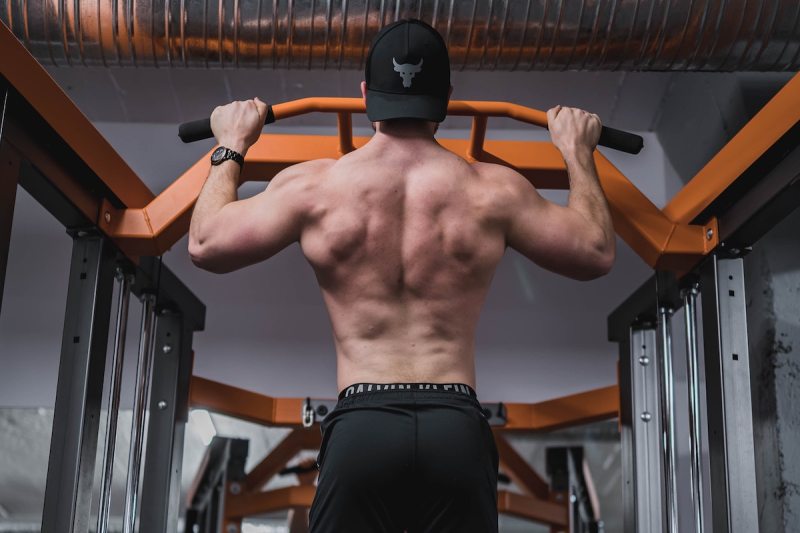
The split muscle group exercises are good for athletes who need to avoid muscle soreness and injuries while training for an event. By allowing enough recovery time, they are less likely to miss numerous training sessions because of injuries. However, anyone can benefit from this form of exercise as well because rest days allow muscles to recover and grow after regular activity.
Benefits of the push vs. pull split
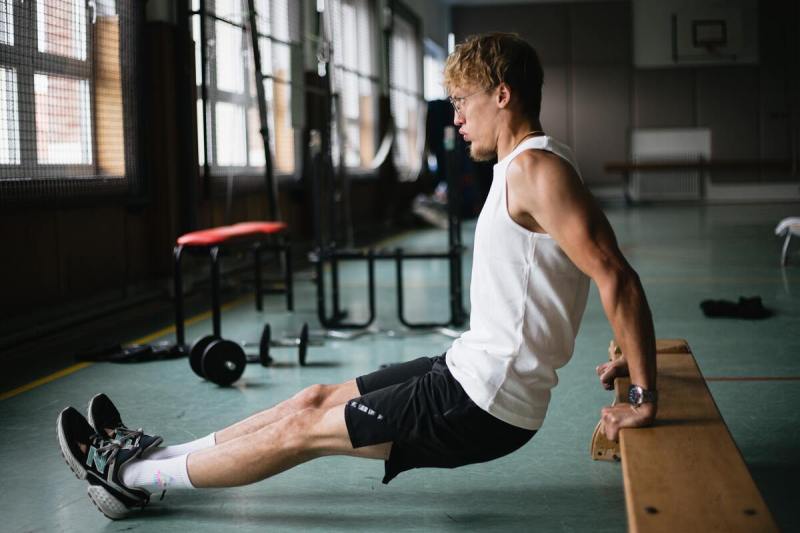
1. Works all muscles groups evenly
It’s easy to concentrate on certain muscles at the gym while neglecting others. This can disturb the balance of the body with uneven muscle tones and strength zones. A push-pull exercise regimen can ensure that all muscles are worked evenly. This is because an equal amount of time is spent activating opposing muscle groups.
Muscle imbalances can occur if you follow a weightlifting exercise program because these tend to concentrate on the muscles immediately on show, such as the biceps, chest, and stomach muscles, while leaving weaknesses in the back. Again, this can lead to imbalances and an increased risk of training-related injuries.
2. Adds structure to workouts
If you go to the gym and exercise without a plan, you could again neglect or overwork certain muscle groups. With a push vs. pull split exercise program, you know exactly what exercises and what muscles need to be worked each day.
3. Helps avoid injuries
As already mentioned, injuries are common while regularly exercising or training, and the majority of these are muscle-related. Causes are many but mainly involve overtraining. Split exercise routines allow the necessary recovery time needed between each session for the different muscle groups in the body to recover fully and not become injury-prone.
4. Helps to add variety to workouts
Training or exercising regularly for general fitness can become monotonous. Split exercising helps break the monotony, making you more likely to succeed in your exercise goals.
Downsides of the push vs. pull split
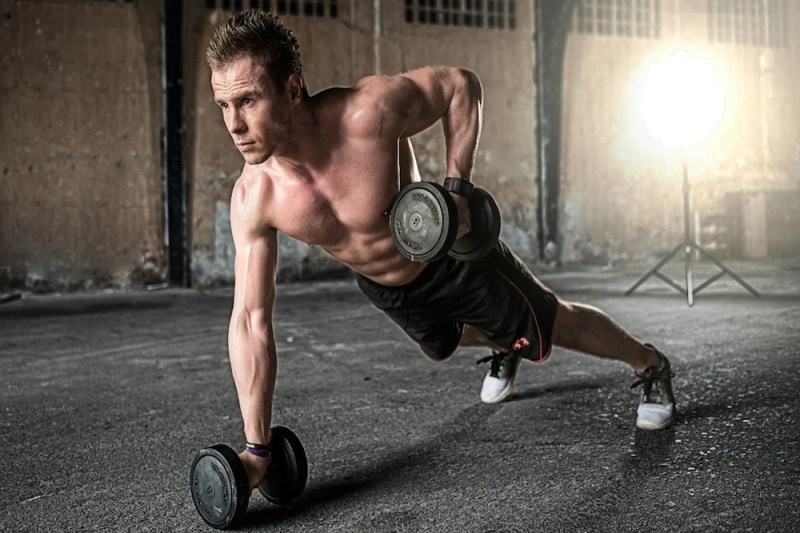
1. The program needs to be completed
Push-pull workouts need to be done regularly for a person to gain full benefit, so it’s not for the casual gym goers who may only visit a gym when they feel up to it.
2. Session length
If you’re into quick, sharp, and intense workouts because you have little time to spare each day, then a push vs. pull session may not be for you because each exercise period has to work out a certain muscle group thoroughly. If you’re looking for a quick 10-minute gym fix, commit to other exercises instead, such as intense spin sessions.
3. One complete rest day a week
Those who exercise regularly, whether at home or in the gym, usually want two or three complete rest days in the week. However, because push-day workouts and pull-day workouts use different sets of muscles while resting others, you won’t have as much time to dedicate to overall rest and recovery.
Example push-pull split routine
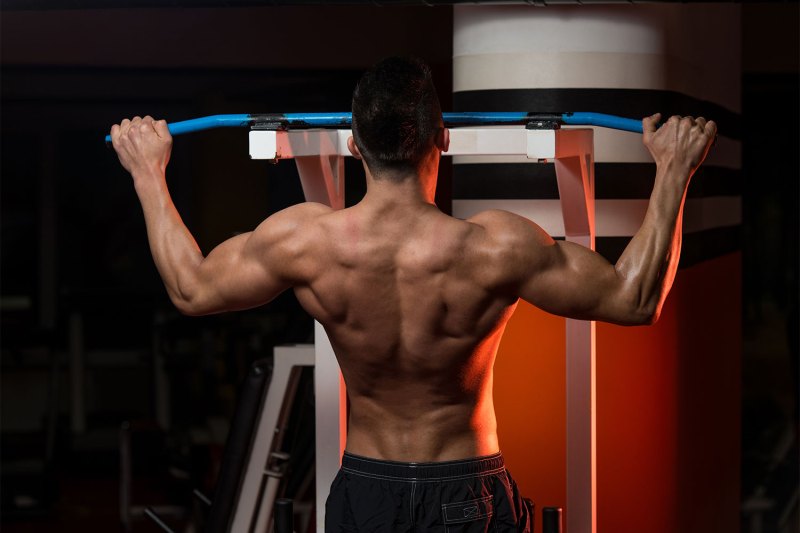
Push day workout #1
| Exercise | Sets | Reps | Rest time |
| Bench press | 4 | 6–8 | 1 minute |
| Overhead press | 3 | 10–12 | 30 seconds |
| Dumbbell front raises | 3 | 10–12 | 30 seconds |
| Cable tricep pushdowns | 3 | 12–15 | 30 seconds |
| Dips | 3 | To failure | 30 seconds |
Pull day workout #1
| Exercise | Sets | Reps | Rest time |
| Pull-ups | 4 | To failure | 1 minute |
| Lat pulldowns | 3 | 10–12 | 30 seconds |
| Cable rows | 3 | 10–12 | 30 seconds |
| Cable bicep curls | 3 | 12–15 | 30 seconds |
| Hammer curls | 3 | 12–15 | 30 seconds |
Push day workout #2
| Exercise | Sets | Reps | Rest time |
| Military press | 4 | 6–8 | 1 minute |
| Cable chest flys | 3 | 10–12 | 30 seconds |
| Machine chest press | 3 | 12–15 | 30 seconds |
| Lateral raises | 3 | 10–12 | 30 seconds |
| Skull crushers | 3 | 12–15 | 30 seconds |
Pull day workout #2
| Exercise | Sets | Reps | Rest time |
| Machine pulldowns | 4 | 10–12 | 1 minute |
| Reverse flys | 3 | 12–15 | 30 seconds |
| Dumbbell rows | 3 | 8–10 | 30 seconds |
| Preacher curls | 3 | 8–10 | 30 seconds |
| Concentration curls | 3 | 10–12 | 30 seconds |
Tips for getting better results
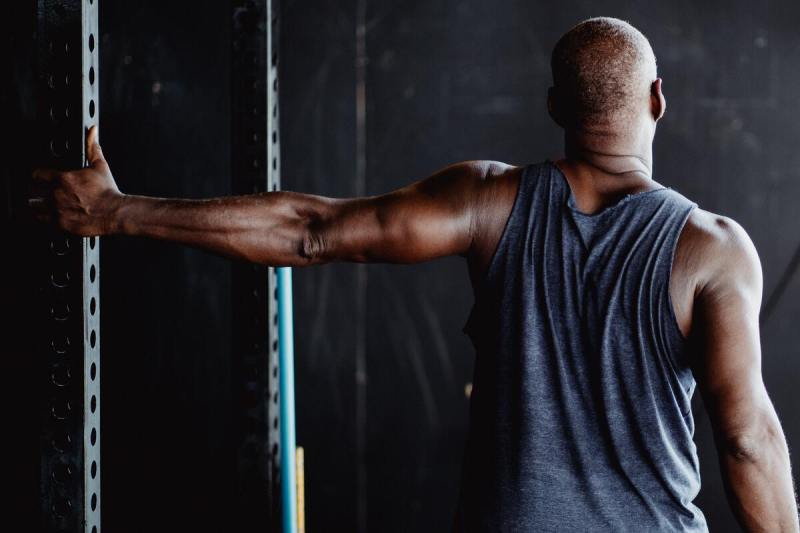
Even if you are diligent with following this program, there are a few other things you can do to maximize your results. To make sure you get the most out of your workouts, consider doing the following:
- Get at least eight hours of sleep every night.
- Warm up before your workouts and cool down after.
- Eat plenty of lean protein.
- Consume at least 25 grams of protein within two hours after your workout.
- Eat the correct amount of calories, depending on whether you are looking to bulk or cut.
- Drink a gallon of water daily.
At-home equipment list

One other thing to know about push-pull workouts is that they don’t require a gym membership or a big investment in home gym equipment. You can still get good results from a home workout with a minimal amount of equipment. For push-day workouts, a pair of dumbbells can be a cost-effective substitute for chest press and chest fly machines.
You can also use the dumbbells for the overhead exercises that work your triceps and shoulders. The dumbbells can also be used for pull-day workouts, with the addition of a resistance band, which will allow you to simulate the actions of a rowing machine by wrapping it around your feet and using the two ends to row.



